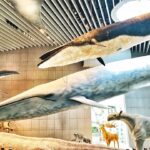The Shanghai Science and Technology Museum, located at 2000 Century Avenue in the Pudong New Area of Shanghai, China, is situated in the Huamu Administrative and Cultural Center, west of Century Square and adjacent to Century Park in the south.
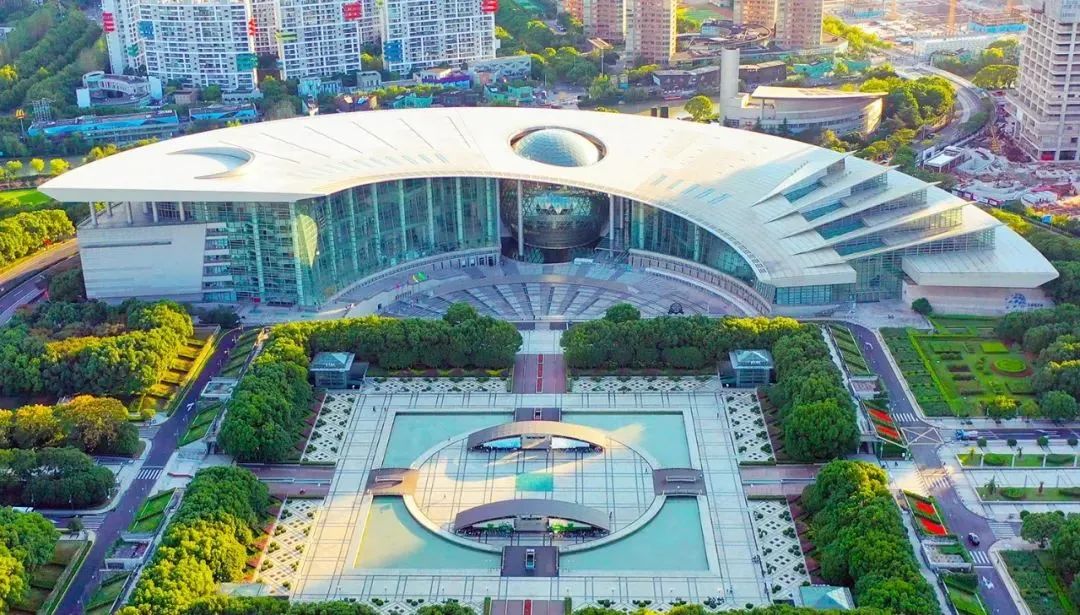
The main building of the Shanghai Science and Technology Museum covers an area of over 68,000 square meters, with a construction area of 98,000 square meters.
It is divided into 11 uniquely styled themed exhibition areas, 4 high-tech special theaters, 3 art galleries showcasing the footprints of ancient and modern scientists from China and abroad, 2 special themed exhibitions, and several temporary exhibition halls. Together, they vividly interpret the eternal theme of “Nature, Humanity, and Technology” for visitors from all over.
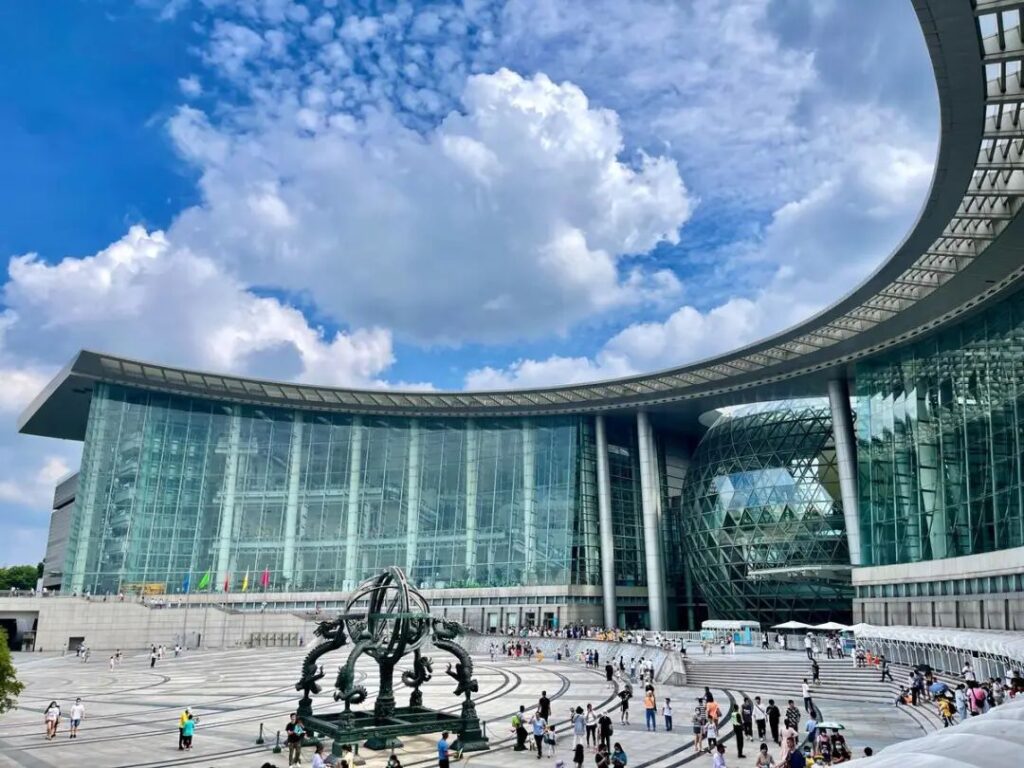
Venue Overview
The Shanghai Science and Technology Museum was officially approved by the municipal government in March 1996. Construction began on December 18, 1998, and was basically completed in April 2001. On October 21, 2001, the 9th APEC Economic Leaders’ Meeting was held at the Shanghai Science and Technology Museum; on December 18, 2001, the first phase of the exhibition was opened to the public.
On May 14, 2005, the second phase of the Shanghai Science and Technology Museum was completed, bringing the total exhibition area to 65,000 square meters.
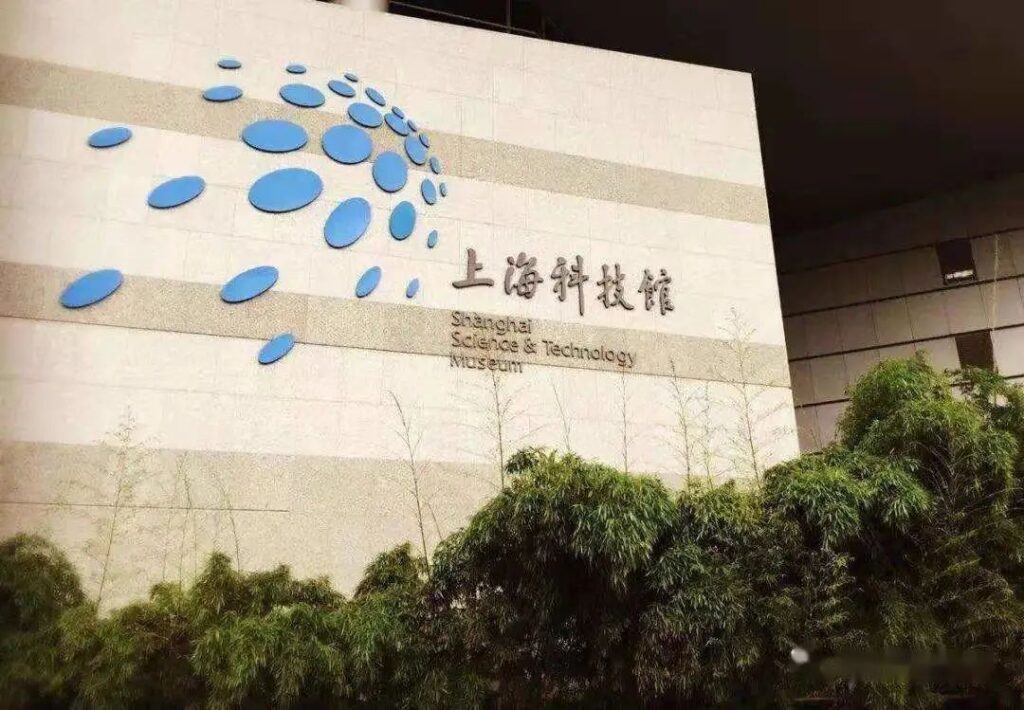
The Shanghai Science and Technology Museum building consists of one underground level, four above-ground levels, and an attached office complex.
The underground level mainly houses two IMAX science theaters (IMAX 3D IMAX Dome Theater and Dome Theater), the Zhangjiang Innovation Achievement Exhibition, and a fast-food restaurant.
The underground level is the museum’s most concentrated public service area, with a ticket hall, a food court, a leisure corridor, and a temporary exhibition hall.
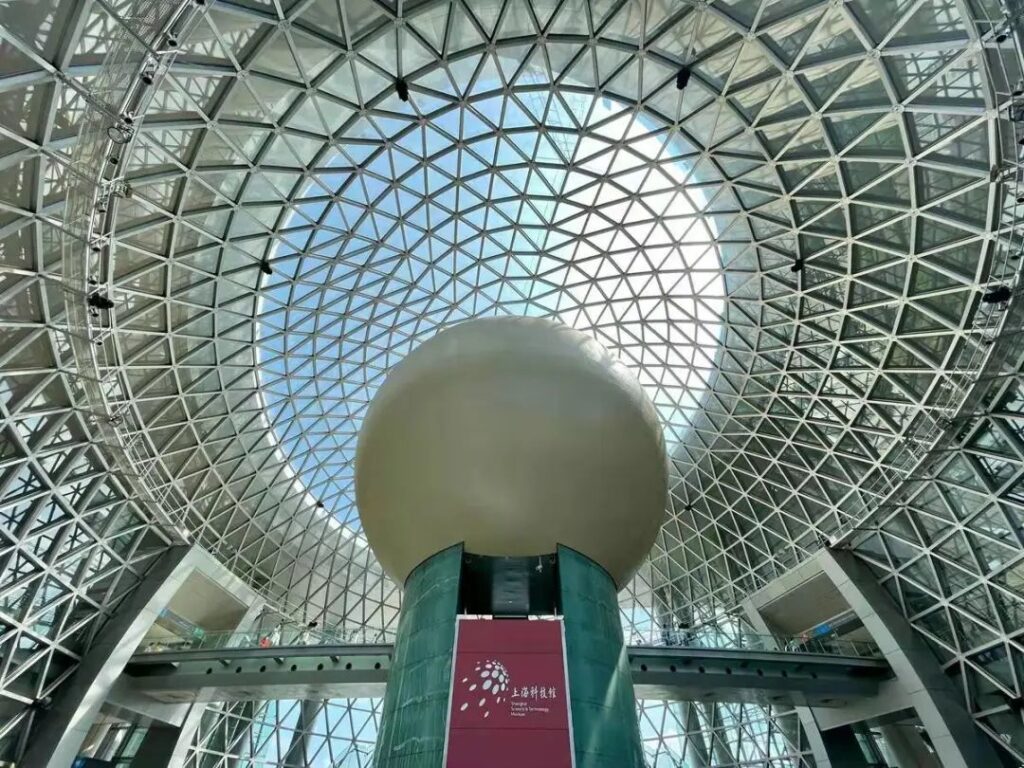
The first floor is the main exhibition area of the first phase of the Shanghai Science and Technology Museum, which includes five exhibition areas: Spectrum of Life, Earth Exploration, Children’s Science and Technology Park, Audio-Visual Paradise, and Designer’s Cradle, as well as a 4D theater. In addition, there are service facilities such as the APEC main venue, a leisure hall, and a coffee lounge.
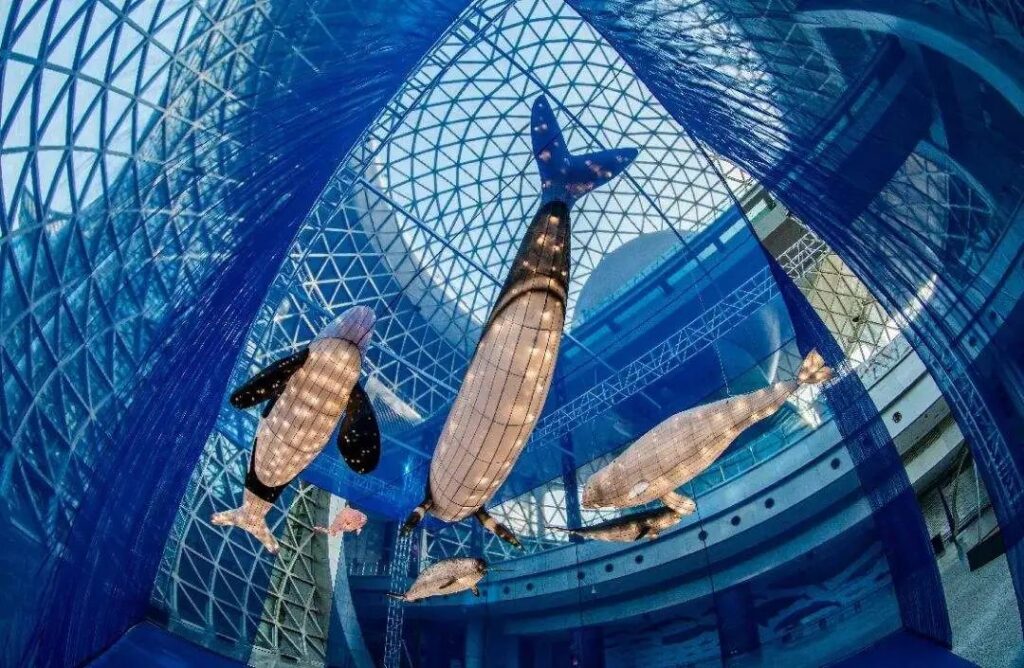
The second floor is one of the exhibition halls of the second phase of the Science and Technology Museum, which includes four exhibition areas: Earth Home, Information Age, Robot World, and Spider Exhibition.
The third floor belongs to the second phase of the Science and Technology Museum and includes three exhibition areas: Exploration of Light, Human and Health, and Aerospace.
Permanent Exhibitions
Spectrum of Life
The Spectrum of Life exhibition area is designed to resemble the natural scenery of Yunnan, China, introducing visitors to the diversity of life. Here, you can fully appreciate the rich and colorful phenomena of life and the interdependence of species and ecology, and recognize the importance of protecting the natural environment.

Biodiversity mainly includes three levels: genetic diversity, species diversity, and ecosystem diversity. The exhibition area is divided into two main parts: the tropical rainforest zone and the stone forest zone, with an exhibition area of 3,000 square meters.

The layered growth of tropical rainforest plants in the rainforest zone demonstrates species diversity, while the bat cave, amphibian and reptile corner, microscopic world, insect garden, and bird kingdom in the stone forest zone reflect ecosystem diversity. The “Forest Inspection Station” reveals genetic diversity and reflects the cutting-edge achievements of genetic technology.
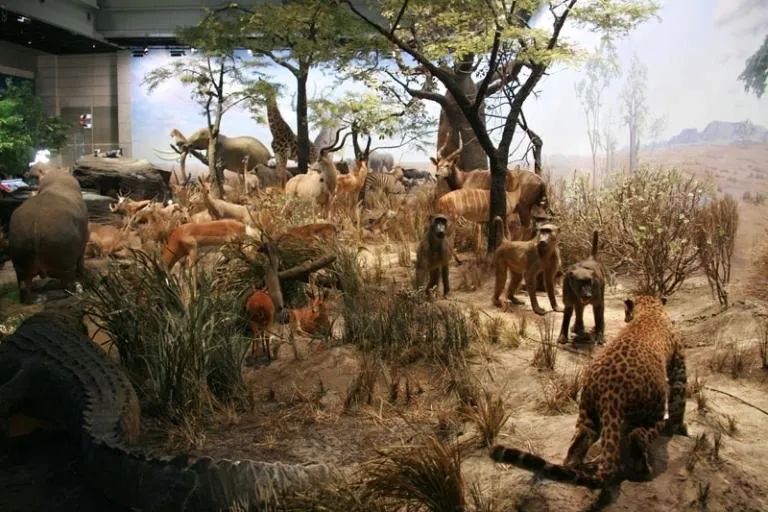
Earth Exploration
The Earth Exploration exhibition area mainly introduces the position and motion of the Earth in the universe, the material composition of the Earth, the structural forms of the Earth, the surface morphological characteristics of the Earth, and the natural geography of Shanghai.

The total exhibition area is 2,200 square meters, divided into three parts: the “Magnetic Levitation Earth Hall,” “Journey of Earth Exploration,” and “Natural Geography of Shanghai.”
Following the theme of “From space to Earth → Deep into the Earth’s crust → Return to the surface to see a pearl on Earth — Shanghai,” it elaborates on the exhibition theme of “understanding the planet we humans rely on for survival — Earth.”
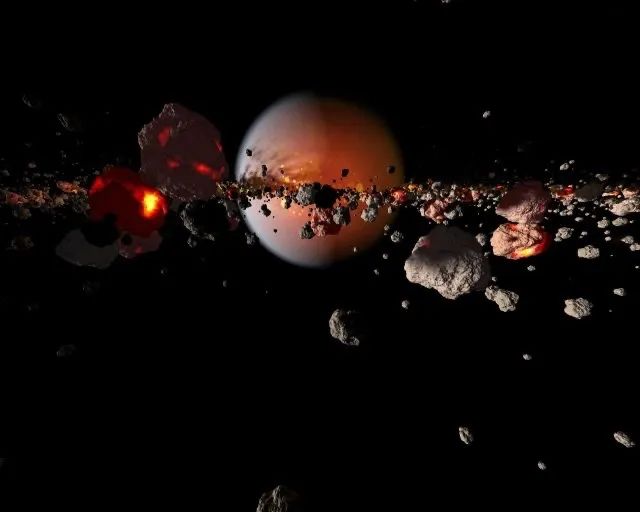
Rainbow Playground
The Rainbow Playground is a dreamlike children’s world designed for ages 1-12. Through a series of lively and engaging science and technology entertainment activities, children can perceive the outside world, observe natural phenomena, and participate in scientific and technological practices. The theme of the exhibition area is knowledge and entertainment, science and games.

The exhibition area covers 1,200 square meters and is divided into “one park and three zones.” There is a street garden for children to rest and play; a dream forest for 1-4-year-olds to perceive the outside world, such as electric swings and a brave path; a play area for 5-8-year-olds to learn about the outside world, such as the Little Architect and Little Botanist areas; and a practice area for 9-12-year-olds to participate in science and technology activities, such as light-controlled airplanes and visual communication.
Light of Wisdom
The Light of Wisdom exhibition area uses a large number of interactive exhibits as the main display method to demonstrate typical phenomena in physics, mathematics, chemistry, biology, and other disciplines, revealing their basic laws and principles, cultivating visitors’ hands-on ability, and understanding scientific methods and ideas, as well as the tireless exploratory spirit of scientists.

The entire exhibition area is based on the concept of “observing natural phenomena → sorting and analyzing typical phenomena → understanding natural laws,” divided into a preface hall, a central activity area, and an interactive exhibit area, with an exhibition area of about 1,800 square meters.
Designer’s Cradle
The Designer’s Cradle exhibition theme is Computer-Aided Design (CAD) and Computer-Aided Manufacturing (CAM), with an exhibition area of 800 square meters. Visitors can personally participate in some simple design and manufacturing activities, experiencing some basic techniques of modern design and advanced manufacturing, including CAD/CAM, laser engraving technology, rapid prototyping technology, and more.

The exhibition area is divided into a design and manufacturing area, a visitor design area, and a design masterpiece area, with exhibits such as a gift engraving station, 3D portrait scanning and production, flexible assembly line, business card and greeting card production station, MTV production station, CAD classroom, and design gallery.
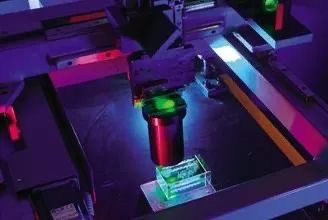
Animal World
The Animal World mainly introduces how animals from five continents and four plates adapt to different environments in terms of morphology, physiology, and behavior. The exhibition area is divided into four sections: Forest Impression, American Animal Group, Eurasian Animal Group, and African Animal Group.

Forest Impression combines sound, light, electricity, and multimedia to show the harmonious coexistence and development of humans and nature; the American Animal Group, composed of South American, North American, and Arctic animals, showcases the physiological characteristics of ungulates in different environments; the Eurasian Animal Group, mainly featuring rare animal specimens from China, reveals the co-evolution and optimal predation strategies among animals; the African Animal Group uses a large number of lifelike animal specimens combined with scenes

Robot World
The traditional robot technology based on simple automatic machinery is beginning to transform into modern robot technology based on information technology. The scope of robot applications has penetrated various fields of human activity.

The Robot World exhibition area allows visitors to understand that robot technology is a comprehensive technology combining multiple disciplines through various robot-related activities.
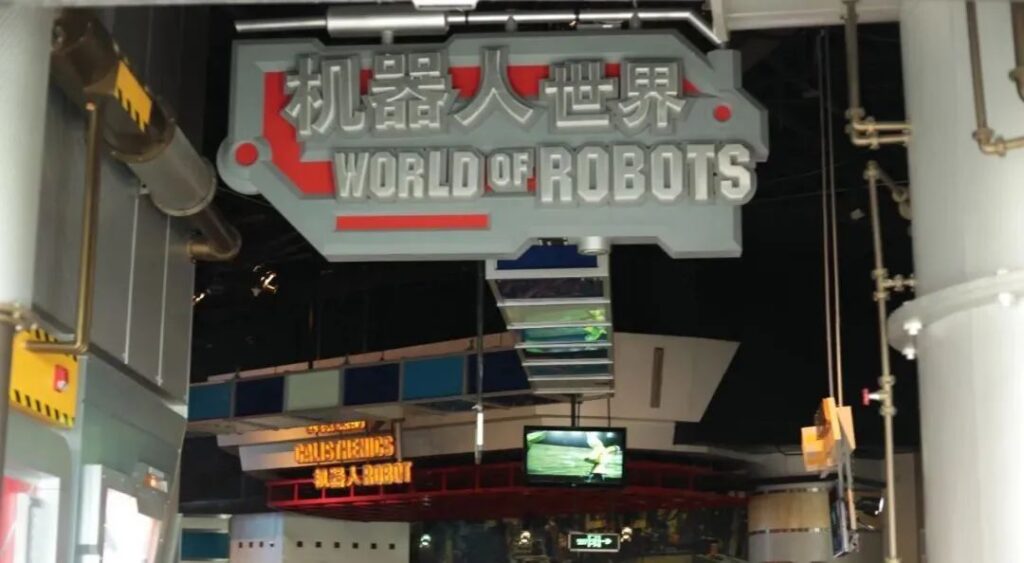
Information Age
The development of information technology has greatly changed people’s lifestyles, learning, and working methods. Application technologies in various industries are constantly being upgraded, promoting the overall adjustment of the industrial structure, and the entire society is in the process of transformation.

This exhibition area allows visitors to understand the differences between information technology and traditional technology through various physical displays, recognize the application of information technology in modern life, learning, and work, and experience the social characteristics of the information age.
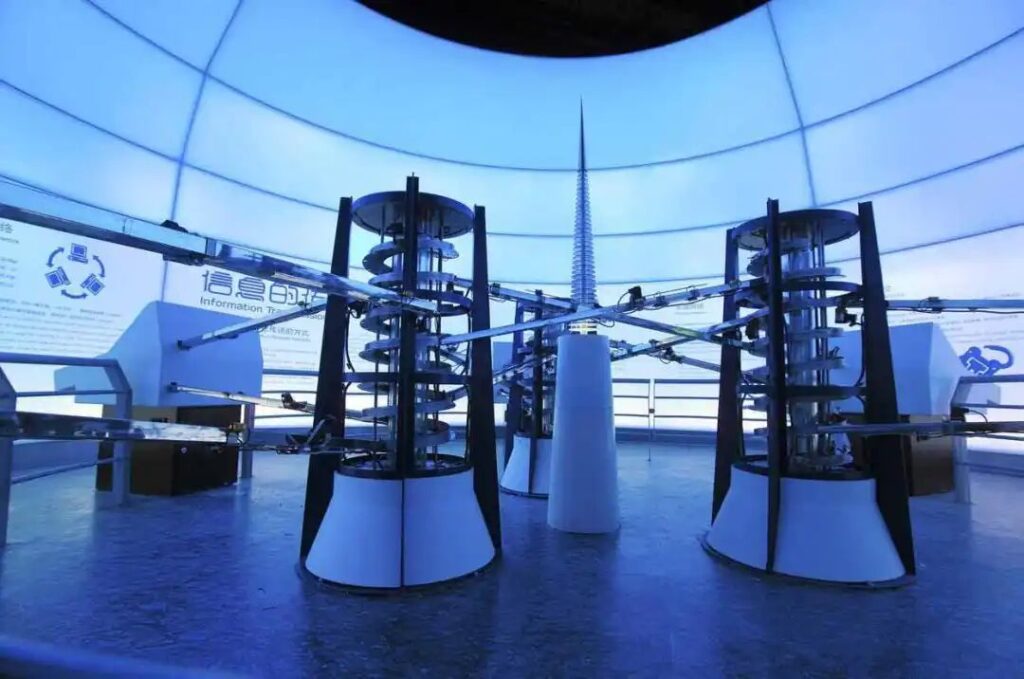
Earth Home
The natural environment of the Earth has been increasingly affected by the development of human society. After the Industrial Revolution, due to the rapid improvement of productivity and the dramatic increase in population, a series of ecological and environmental problems have been triggered. Sustainable development has attracted common attention from all of humanity.

The Earth Home exhibition area answers relevant questions about sustainable development through three sections: ecological disasters, the changes of the Suzhou River, and environmental knowledge.
Aerospace
The vast universe, twinkling stars, full of mystery, aerospace is an eternal topic for mankind. The realization of aerospace can be said to be the greatest achievement of science and technology in the 20th century.

The Aerospace exhibition area is planned with four areas: the aerospace knowledge area, the aerospace training experience area, the aerospace achievement display area, and the space theater. Its purpose is to allow visitors to understand and recognize aerospace-related issues through various experiential activities.
Human and Health
The Human and Health exhibition area showcases what health is, how to become a healthy person, and how to maintain health through large human body models, physical fitness testing stations, and modules such as playing football and table tennis.

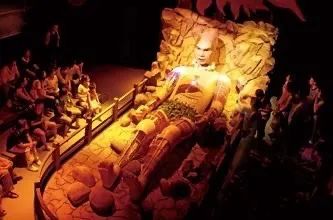
Exploration of Light
In the 20th century, mankind created tremendous scientific and technological achievements surpassing any other century, profoundly changing human production, lifestyle, and existing concepts of understanding the world. This unprecedented change not only greatly promoted the development of society but also greatly improved the quality of human life.

If the “Light of Wisdom” exhibition area reflects human understanding of natural sciences in the 19th century, then the “Exploration of Light” exhibition area is an area that reflects the glory of science and technology in the 20th century. This exhibition area showcases the most important scientific and technological achievements of the 20th century, including quantum theory, relativity, material structure, genetic technology, nuclear energy, lasers, and more.

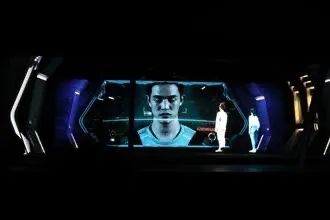
Explorer’s Corridor
The “Explorer’s Corridor” mainly introduces those scientists who have left immortal achievements in human history and their deeds, focusing on 20 scientists who have used their wisdom to change human understanding of the world and way of life over the past more than 3,000 years. In terms of character selection, on the one hand, it emphasizes key figures who have epoch-making significance in promoting the advancement of science and civilization, and on the other hand, it also appropriately takes into account the long history, rich categories of scientific research, and other characteristics of ancient, modern, Chinese, and foreign figures.

Spider Exhibition Hall
There are a total of 6 spider chapters at the entrance of the Spider Exhibition Hall, which mainly introduce spiders from all over the world, such as poisonous spiders, spider habits, spider spawning methods, and spider life.

Special Theaters
IMAX Theater
The IMAX 3D giant screen theater in the Shanghai Science and Technology Museum is the first 3D giant screen theater in mainland China. The giant screen of the 3D giant screen theater is huge, 18.3 meters high and 24.3 meters wide (equivalent to the height of a 6-story building), and can accommodate 441 viewers. The projection equipment of the 3D giant screen theater adopts a 70mm 15-perforation IMAX dual-machine projection system, which uses a 70mm 15-perforation film frame that is 10 times larger than a standard 35mm film frame.
When projecting 3D movies, the huge 6-story high screen creates a strong impact on the audience, and there is a 6+1 channel sound system in the theater, which simultaneously broadcasts music and special sound effects through more than a dozen speakers.
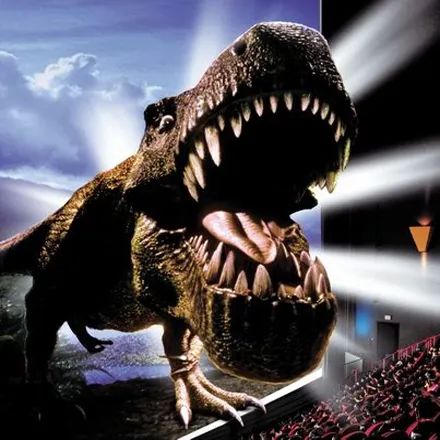
Dome Theater
The IMAX Dome Theater in the Shanghai Science and Technology Museum is a novel audio-visual venue that integrates education and entertainment, with dual functions of dome films and celestial demonstrations. The screen has a diameter of 23 meters and a tilt angle of 30 degrees. The tilted screen can make the audience feel like they are floating in the air. It can accommodate 280 viewers.
The projection equipment of the Dome Theater adopts a 70mm 15-perforation IMAX single-machine projection system. During projection, the projector rises to the central projection window of the theater through an elevator, and the image is projected onto the tilted spherical screen through a 165-degree fisheye lens, covering more than 85% of the screen with a clear and stable picture.
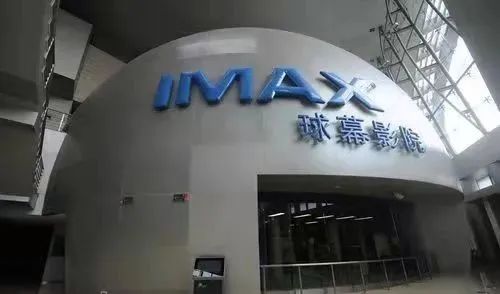
he celestial demonstration of the Dome Theater adopts a digital planetarium system. “Sitting still in a room, proudly traveling in space” is a specific description of the celestial demonstration. The starry sky presented by the planetarium is realistic and accurate, and it can simulate the starry sky and its movement seen from anywhere on Earth, in the solar system, at any time. Many rare astronomical phenomena, such as solar eclipses, lunar eclipses, comets, meteor showers, and other phenomena can be reproduced and predicted in the Dome Theater.
The planetarium can also demonstrate planetary motions, astronomical coordinates, constellation patterns, bright stars, nebulae, star clusters, galaxies, and the Milky Way according to teaching requirements. In addition, the planetarium, in cooperation with various auxiliary projectors, can demonstrate cosmic scenes that can only be seen by astronauts on planets other than Earth.
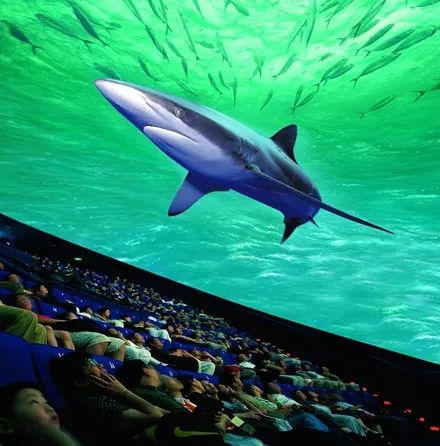
4D Theater
The 4D Theater is a Disney-concept cinema that can accommodate 56 viewers, combining three-dimensional stereoscopic movies with one-dimensional environmental effects. During the screening, the theater’s environment, including sprinklers, water jets, wind, smoke, and sinking seats, changes according to the movie’s plot, allowing the audience to experience phenomena such as rain, splashing seawater, falling into traps, and crabs biting their legs. This fully immerses the audience into the movie, making them feel as if they are part of the story.
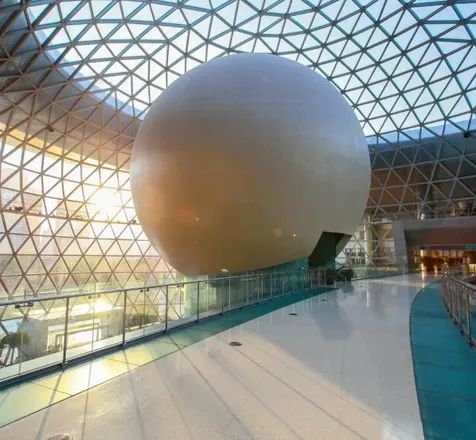
Space Theater
The Space Theater is China’s first multimedia dome theater that integrates video splicing, image processing, audience interaction, and computer integration technologies. The Digistar3 system consists of six video projectors with a total illumination power of 4,800 watts. Under the control of computers, these projectors transmit six connected images onto a 13-meter-diameter spherical screen, forming a complete full-dome image.
The entire theater has 69 seats, with a seat inclination of 23 degrees, allowing the audience to watch the movie in an almost lying position. The most incredible feature is that each seat’s armrest has a control button, which the audience can press to control the movie’s plot development, achieving the realm of “the picture moves with the person, and the person’s thoughts follow the picture.”
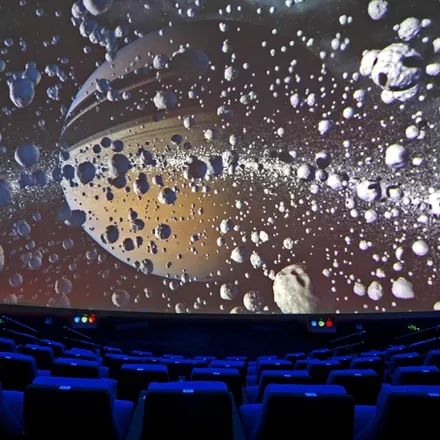
Related Articles:
